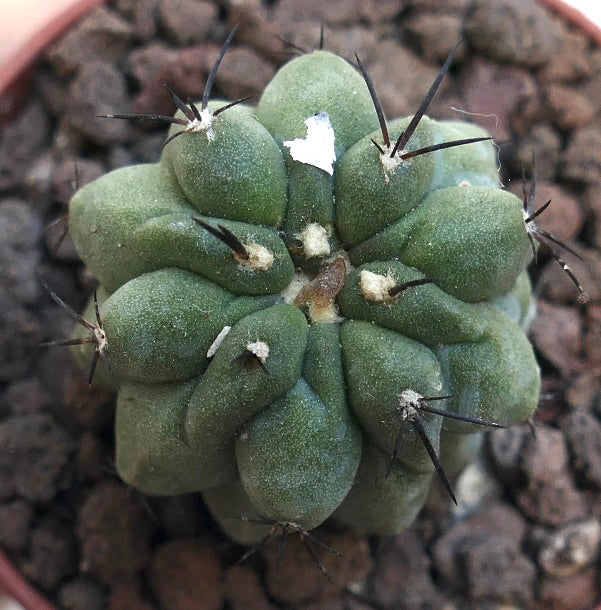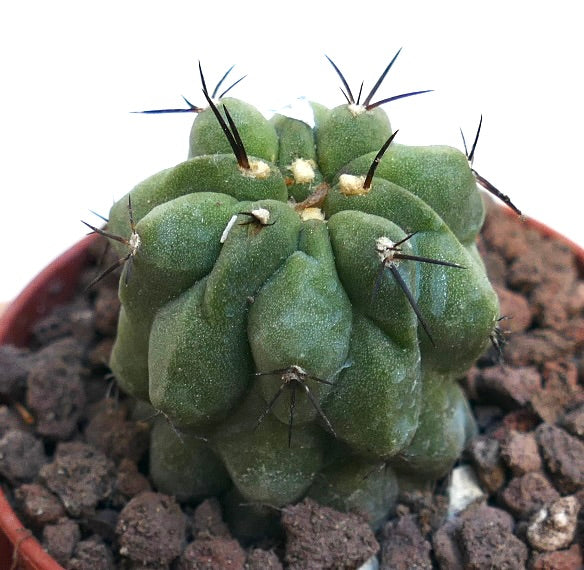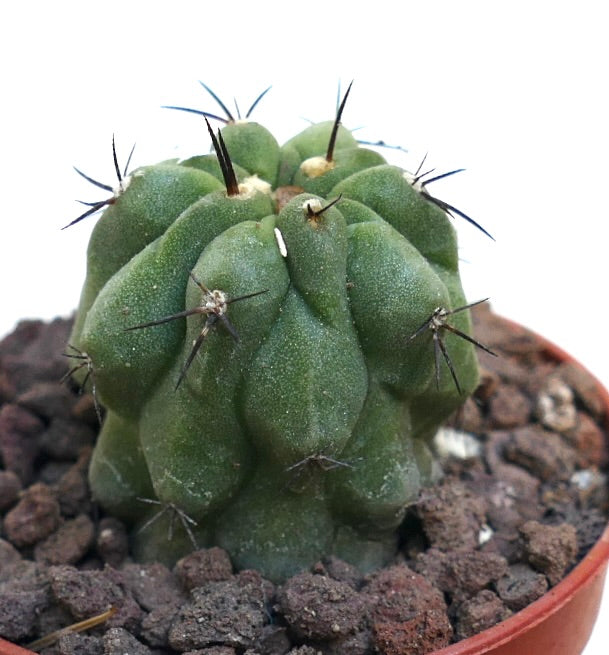- Single Specimen
Copiapoa cinerea KIKKO GREEN X Copiapoa hypogaea RNM2
Copiapoa cinerea KIKKO GREEN X Copiapoa hypogaea RNM2
Couldn't load pickup availability
Product Description
Copiapoa hybrids refer to cultivated varieties that result from the crossbreeding of different species within the Copiapoa genus, which is part of the cactus family. This genus is native to the desert regions of northern Chile, where it has adapted to thrive in harsh, arid environments. The hybrids are often created by enthusiasts and botanists to combine desirable traits from different species, such as unique forms, colorful flowers, or enhanced resilience to various growing conditions.
Hybridization in Copiapoa can produce a wide range of visual and physiological variations, leading to unique specimens that might not occur naturally. These hybrids can showcase a variety of sizes, spine configurations, body shapes, and flower colors. Hybridizing cacti, including Copiapoa, is a common practice among cactus enthusiasts who aim to create plants with specific aesthetic qualities or to increase genetic diversity within cultivated collections.
Copiapoa hybrids might be created for various reasons, including:
- Aesthetic Appeal: Combining species to create plants with unique shapes, sizes, or colors.
- Environmental Adaptability: Developing hybrids that can tolerate different or more challenging growing conditions than their parent species.
- Conservation: Helping to preserve rare or endangered species by increasing genetic diversity through controlled crossbreeding.
Cultivating Copiapoa hybrids requires knowledge of cactus propagation techniques, such as grafting or seed sowing, and an understanding of the specific care needs of the resulting plants. These can include considerations of sunlight exposure, watering schedules, soil composition, and temperature tolerance, which may vary from those of the parent species due to the unique characteristics of the hybrid.
Botanical family: Cactaceae
Botanical genus: Copiapoa
Botanical species: Copiapoa cinerea KIKKO GREEN X Copiapoa hypogaea
SKU:BA-2294-S-RNM2
Cultivation
Cultivation
Info and Disclaimers
Info and Disclaimers
Plant Height:
Plant Diameter:
Pot Size:
Grafted/Not Grafted:
Picture take on:
Disclaimer: Please keep on mind that the plant may have grown or changed since pictured.






